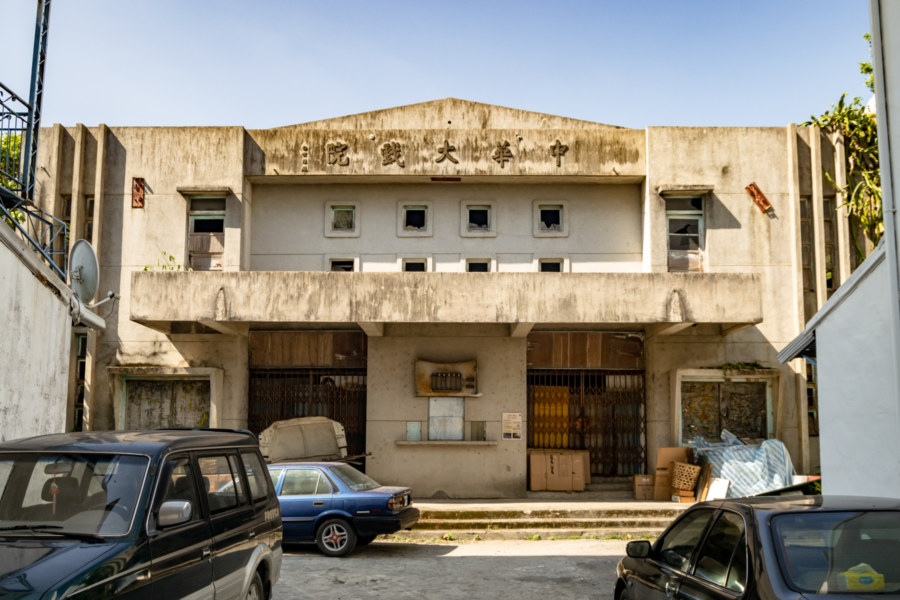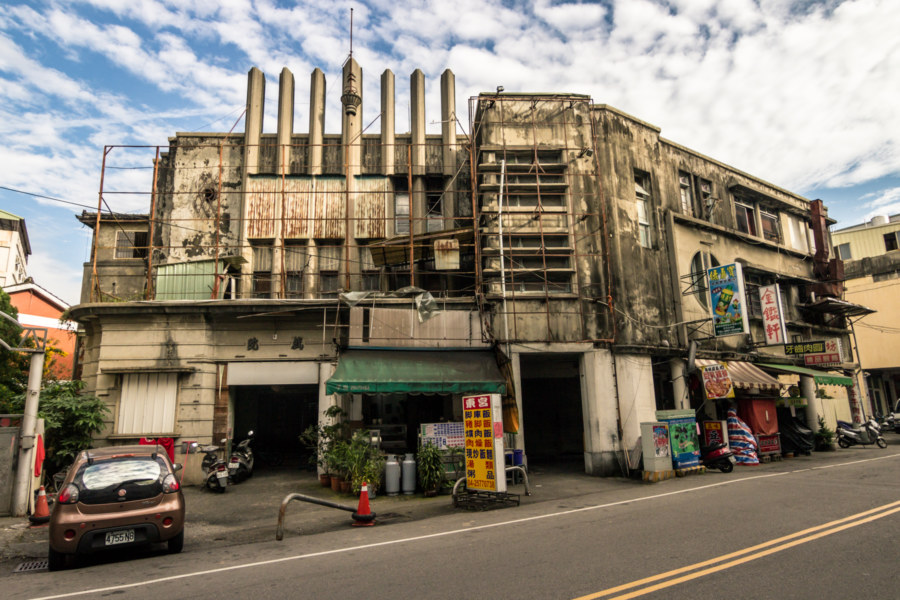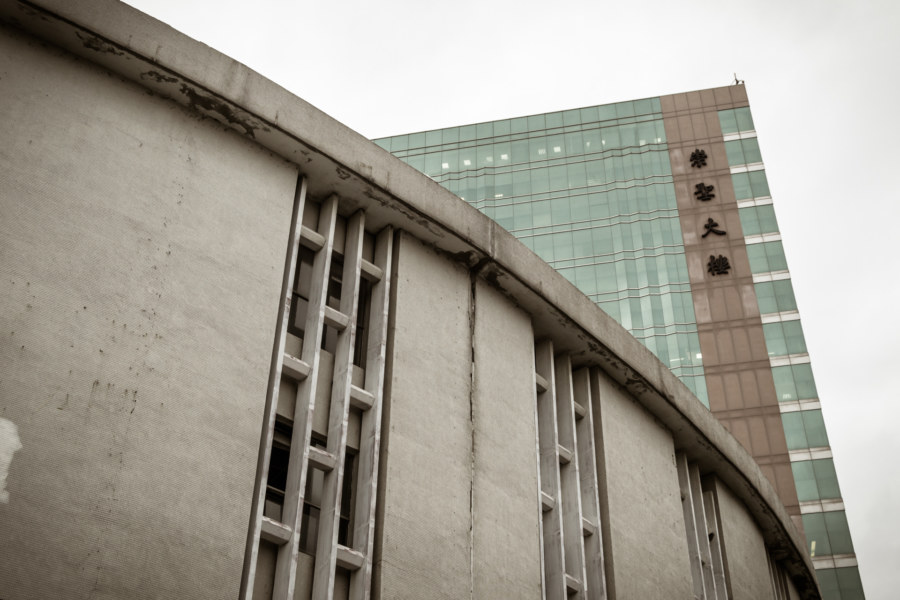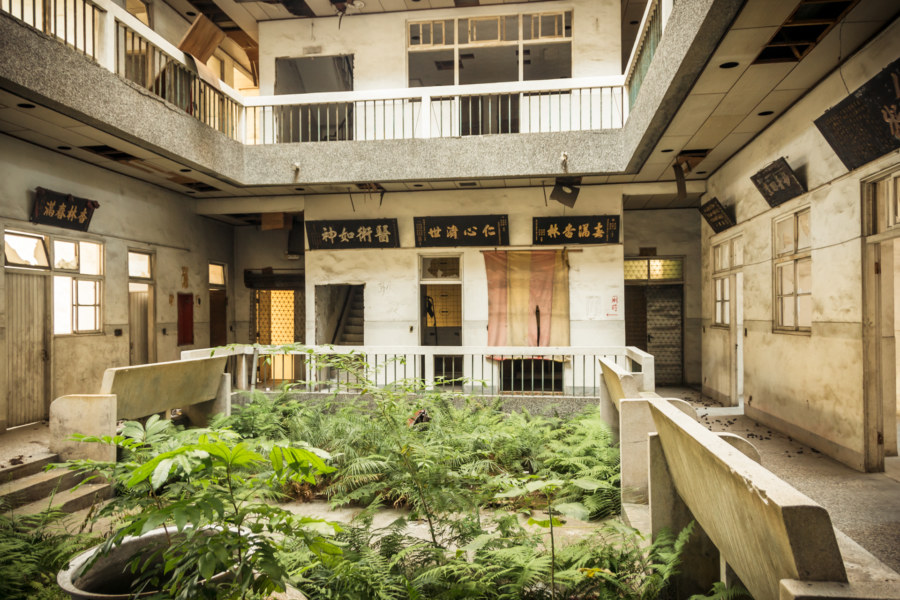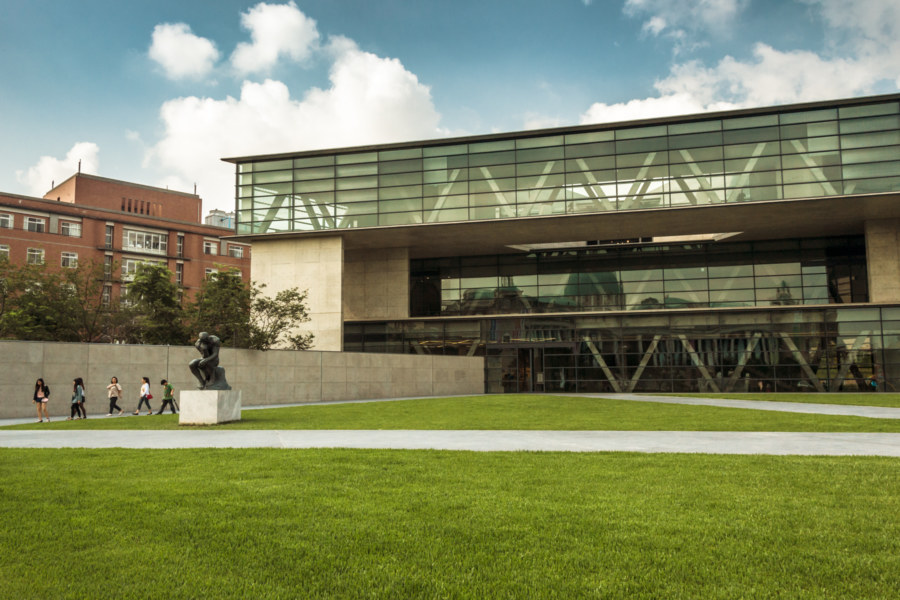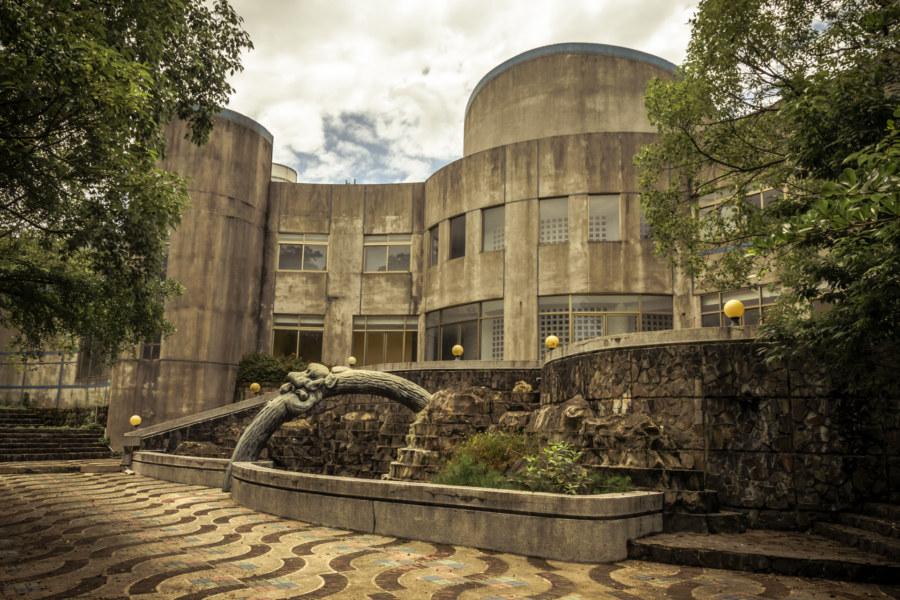Zhōnghuá Theater (中華大戲院) is an impressive KMT authoritarian era ruin in Guanshan, a small town of approximately 8,800 in the idyllic Huadong Valley of Taiwan. With seating for 1,200 patrons it was the largest theater in Taitung when it opened in 1965, and it soon earned the title “northern tyrant” (běibàtiān 北霸天) for dominating the cinema industry at this end of the county. What explains the existence of such a huge theater in this remote, sparsely populated place? As with the more modest and folksy Wǔzhōu Theater (五洲戲院) in neighbouring Chishang, a closer examination of regional socioeconomic history provides answers.
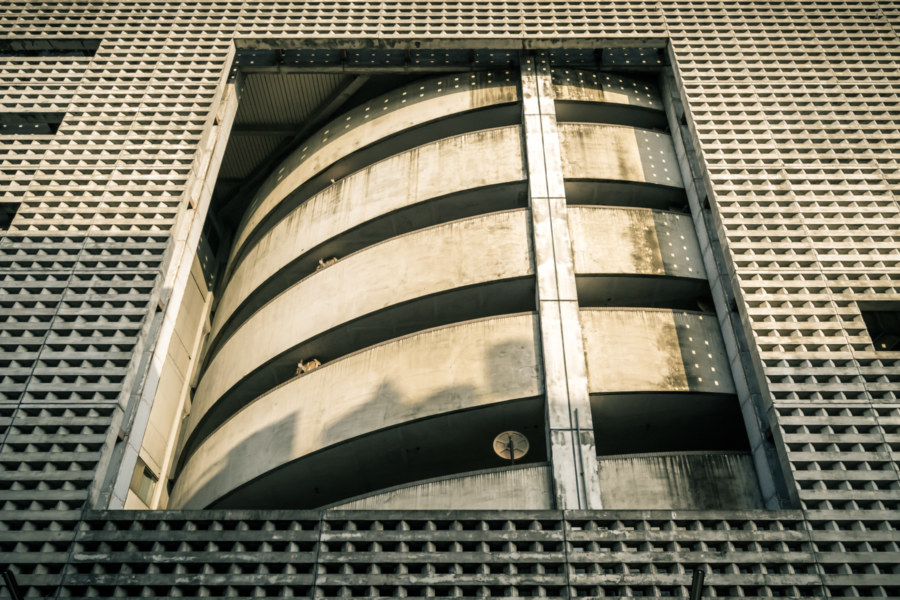
Brutalism (粗野主義) is a post-war style of architecture typified by geometric repetition, asymmetric design, and exposed construction materials, especially concrete.
Adjacent Terms
Brutalist Parkade
Cǎoxiédūn Public Parkade 草鞋墩公有立體停車場 is an intimidating structure looming over one of the main commercial shopping streets in Caotun, Taiwan. I was there in search of an abandoned theater but was immediately impressed with the strikingly brutalist design of this multi-storey car park. It is merely a place to park so there’s little more to say, though it would seem that it was recently derelict. Probably the only other tidbit of information worth conveying is that “Caoxiedun” refers to the original name of the town. You can be sure the first settlers never imagined this monument to honest architecture standing in their newly sown fields.…
Donggong Theater 東宮戲院
Dōnggōng Theater 東宮戲院 is located in Dongshi, a Hakka majority township in mountainous central Taichung. Dongshi (or Tungshih in the older Wade–Giles Romanization system) is the gateway to the densely forested interior and was a major center of the lumber industry in Taiwan prior to its decline in the late 1970s and early 1980s. Disaster struck in 1999 with the devastating 921 Earthquake. Dongshi was among the worst hit; over 300 people lost their lives and hundreds of buildings collapsed—but not this grand old theater.
Second Taipei City Council Building 第二台北市議會大廈
One of the more peculiar ruins I’ve seen in Taiwan was a building immediately across from the Control Yuan (監察院), one of the five branches of government, on Zhōngxiào West Road (忠孝西路). It was inaugurated as the second home of the Taipei City Council (台北市議會) in 1964 after moving from nearby Zhongshan Hall (中山堂). In 1990 the city council relocated to its present base in Xinyi and the building was converted into a police station before being completely abandoned in 2007. Despite this the building continued to be known as the Second Taipei City Council Building (第二台北市議會大廈).
Xinglin General Hospital 杏林綜合醫院
Xìnglín General Hospital 杏林綜合醫院 is perhaps the most famous ruin in downtown Tainan, Taiwan. It opened for business in 1975 as the largest hospital in the city and catered to the burgeoning middle class during the boom times of the Taiwan Economic Miracle. In 1993 the hospital shut down after being plagued by a number of scandals involving fraudulent records, medical malpractice, and allegations of wrongful death. Ongoing legal battles and fragmented ownership have left the building abandoned and neglected since then.
Asia Museum of Modern Art 亞洲現代美術館
The Asia Museum of Modern Art 亞洲現代美術館 (official site in Chinese) is a strange thing to find amid the rural-industrial sprawl of southern Taichung. Located on the outskirts of historic Wufeng, it is part of the much larger Asia University 亞洲大學 campus, itself riddled with European-inspired architectural curiosities like a gymnasium designed to look like the Colosseum of Rome. The art gallery, straying from the kitsch theme of the rest of the university, is an original design by renowned Japanese architect Tadao Ando. It took nearly seven years to build and opened in 2013.
Renoir Resort Club 雷諾瓦俱樂部
Renoir Resort Club (雷諾瓦俱樂部) is a surprising find in Guānzilǐng (關子嶺), the most famous and well-developed hot springs town in Baihe, Tainan. I went to stay there one night in the spring of 2014 to have a look around—but I didn’t expect to find an abandoned club next door to where I was staying. I probably should have known; this is Taiwan, an urban exploration utopia of sorts. Sometimes you will get lucky and discover someplace cool without even trying.
